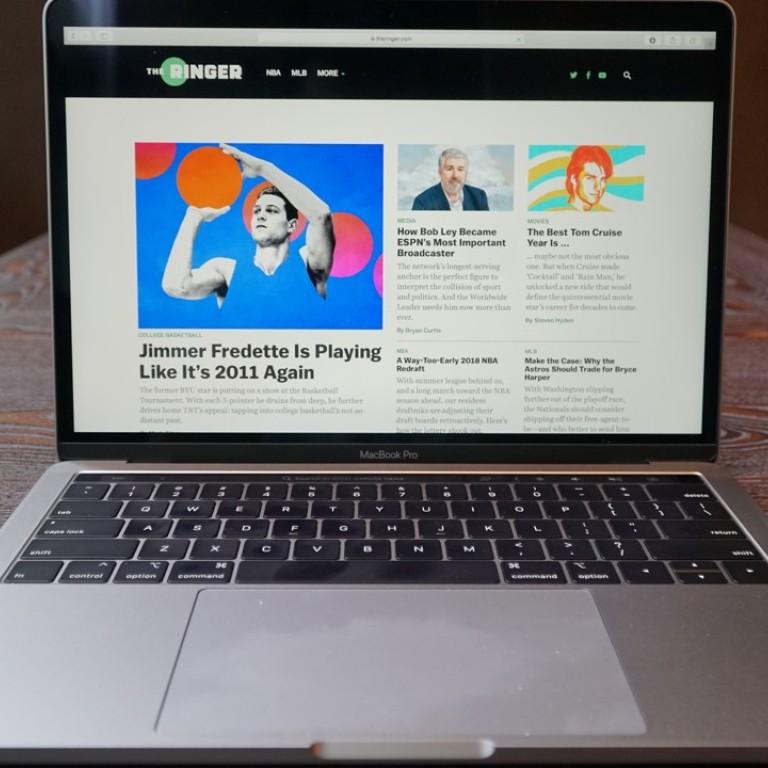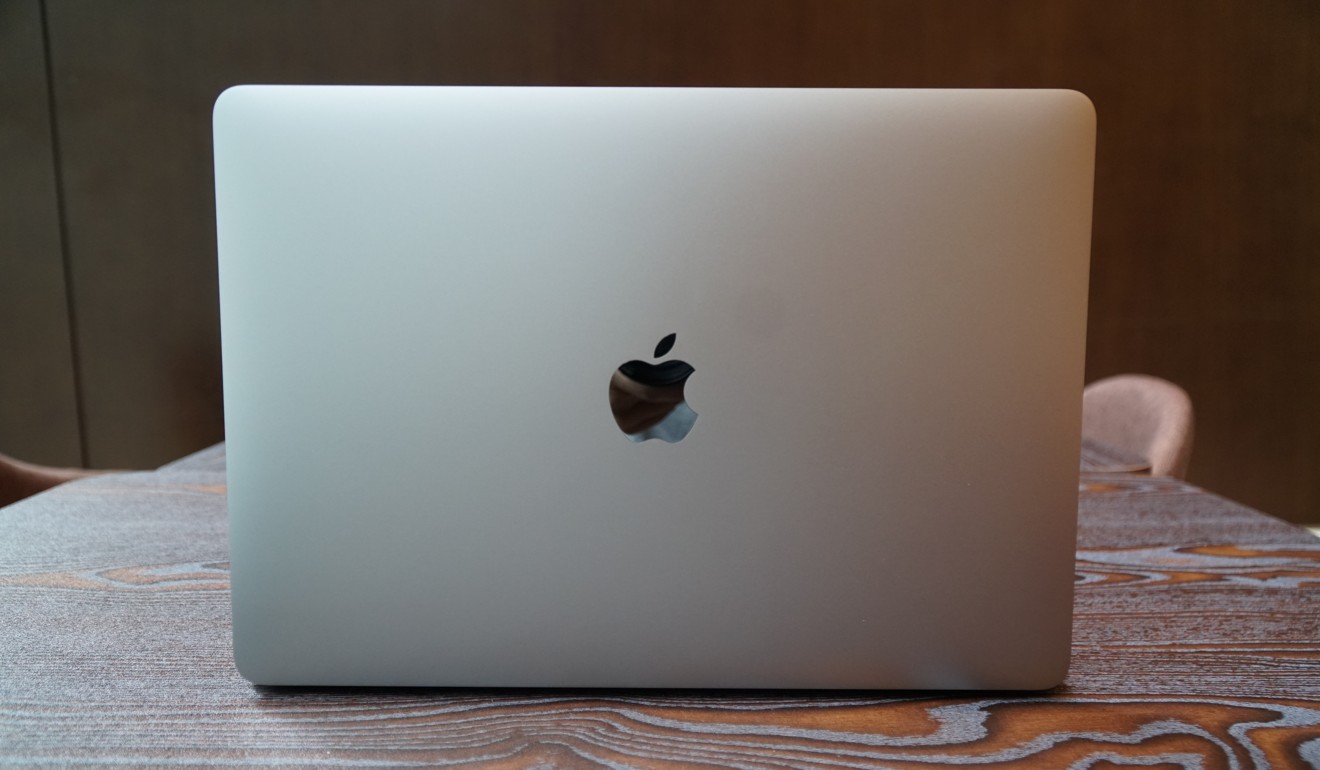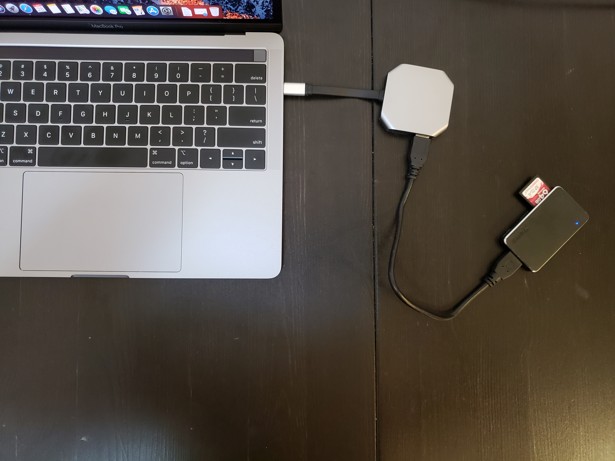
Review | Apple MacBook Pro 2018: fast and powerful, but with bigger bezels and higher price than Dell and Huawei equivalents – review
Eighth-generation Intel Core processors give the 2018 MacBook Pro a performance boost and the battery life is excellent, but the display, keyboard and price compare unfavourably with comparable Dell and Huawei models
There are three types of tech consumers in the world: devoted Apple fans who buy into the company’s entire ecosystem; anti-Apple people who scoff at Apple’s premium pricing and prefer the less restricted operating systems of Windows and Android; and a third group of usually casual tech users who will buy whatever product is on sale or getting the best reviews at the time.
Most people fall into the third group, but the first two groups are passionate, vocal and growing as gadgets become more crucial to our lives.
Eve 5: first ever crowd-developed computer is what the people want
Apple’s recently released 2018 MacBook Pro line-ups will do nothing to change the opinion of either side. Apple loyalists will think the new laptops are the most well-built around, and MacOS the most intuitive and thoughtful operating system. The other side will scoff at the high price tag and the relatively chunky bezels around the displays compared to what Huawei or Dell is offering.
Both sides would be completely right. Here’s why.
Design and hardware
The review unit tested is the 13-inch model, but everything written in this section applies to the 15-inch unit as well, unless specifically stated.
Almost all the upgrades to this year’s MacBook Pro line are internal, meaning the laptop looks completely identical to the last two generations. This is both good and bad.
The good is obvious – Apple’s unibody aluminium design influenced the entire laptop industry, and the MacBook Pro is still among the most premium feeling and looking portable computers around. But by 2018 standards the bezels around the display are relatively thick, especially when compared to the edge-to-edge screens on the Dell XPS 13 and Huawei MateBook X Pro.

The butterfly keyboard mechanism improves on last year’s much-criticised design. Meanwhile, the digital strip that replaces the function keys returns, offering context-specific touch screen controls that seem gimmicky at first but have completely grown on me.
The big upgrade is to the processors. The 2018 MacBook Pros run on Intel’s 8th-generation “Coffee Lake” Core processors. The unit I tested is the i7, which is the middle child; there’s also an i5 for the most entry-level model and an i9 that’s exclusive to the 15-inch model.

These are powerful computer brains that, combined with Apple’s T2 chipset, make the MacBook Pro as powerful as any portable machine out there. The problem is that the 8th-gen Intel processors were released last October, and some Windows machines have been running on them for almost as long. Apple is merely playing catch-up here.
There is a headphone jack, but the other ports are all USB-Cs, which can charge the laptop as well as transfer data. USB-C is the universal cable of the future, but not yet mainstream, as most accessories including flash drives and wireless mouse receivers still use USB-A. That means you probably won’t be able to plug in most of your accessories unless you invest in a dongle.

It’s weird that Apple has accepted USB-C as the best power-delivery method for its laptops but still stubbornly clings to the Lightning port for iPhones. There is much irony in the fact that MacBook users with an Android phone can use one cable and charging brick to power everything, while iPhone users need two sets of cables and bricks.
Software and features
I think it’s an objective fact that MacOS is a better-designed UI than Windows. From swiping gestures to software integration, MacOS runs smoother, is less prone to bugs, and looks better.
The 2018 line runs on MacOS High Sierra. New features include Siri support and the “True Tone Display” – which changes display temperature to better match the environment – carried over from the iPhone X and new iPads.
I didn’t care much for True Tone Display – I’d rather have accurate colours – but being able to summon Siri to look up facts for me as I’m typing a paper is useful.
Performance and battery life
There was controversy regarding the new MacBook Pros in the first week of release as reviewers noticed the i9 models suffered from throttling when under stress. Apple has since issued a software update that fixed the problem, and now these MacBook Pros all run like a champ.
This i7 model has enough power to handle everything I threw at it, including light gaming. It processed 4k videos faster than my Dell XPS 13 can.

The butterfly keyboard, as mentioned, has been made quieter and more crumb-proof, but it still has relatively little travel and tactile feedback compared to almost all other laptops out there. I can still type on it fine, but I prefer the keyboard on the Dell XPS 13 or older MacBooks.
The Touch Bar – that digital strip that sits at the top of the keyboard – has completely won me over. I love that it replaces the little-used function keys, instead showing context-specific touch screen buttons. When I have Safari open, for example, the Touch Bar offers buttons to jump to frequently visited websites. When I’m playing a video, the Touch Bar not only allows me to pause or play, but I can fast-forward or rewind by sliding my finger forward or backwards.

Battery life is also excellent. I’ve been getting roughly 10 hours of use per charge. And since I mostly use Android phones, being able to charge the laptop with the same portable battery and USB-C cable that I already carry around saves me the hassle of carrying a dedicated laptop brick.
Conclusion
MacBook users who are in need of an upgrade will love this release (except maybe the keyboard).
As for price, those who have been using Windows or Chromebooks will scoff: the absolute base model MacBook Pro, with an i5 processor, 8GB of RAM and 256GB internal storage, costs HK$14,388. Those same specs on the Dell XPS 13 and Huawei MateBook X Pro sell for HK$11,710 and HK$10,400, respectively. The price gap widens when comparing the top-tier models.
Cheaper than a MacBook, easily as good: Huawei’s MateBook X Pro
Still, the MacBook Pro is the innovator behind the premium, powerful, beautiful laptop, and that alone will be worth the pricing for many.
Specifications
Dimensions: 304mm x 212mm x 14.9mm (13-inch); 349.3mm x 240mm x 15.5mm (15-inch)
Weight: 1.37kg (13-inch); 1.83kg (15-inch)
Display: 13.3-inch 2,560 x 1,600 LED panel; 15.4-inch 2,880 x 1,800 LED panel
Battery: 54.5Wh / 58.0Wh (13-inch); 83.6Wh (15-inch)
OS version reviewed: MacOS High Sierra Version 10.13.6
Processor: 8th-generation 2.5GHz Intel Core i7
Camera: 720p camera
Memory: 8/16GB of RAM; 256GB/512GB/1TB/2TB SSD ROM
Colours: Space grey, silver
Price: 13-inch starts at HK$14,388 for the i5/8GB RAM/256GB ROM model; up to HK$19,788 for the i7/16GB RAM/2TB ROM model
15-inch starts at HK$18,988 for the i7/16GB RAM/256GB ROM model; up to HK$52,408 for the i9/32GB RAM/4TB ROM model

